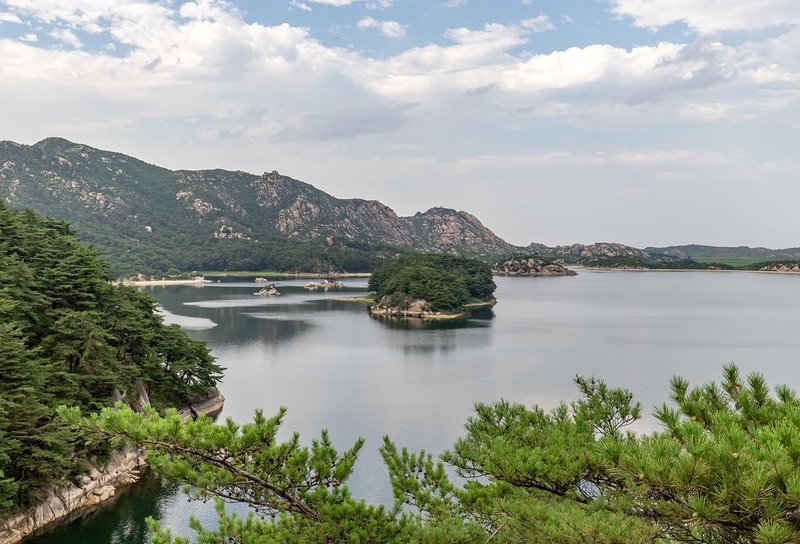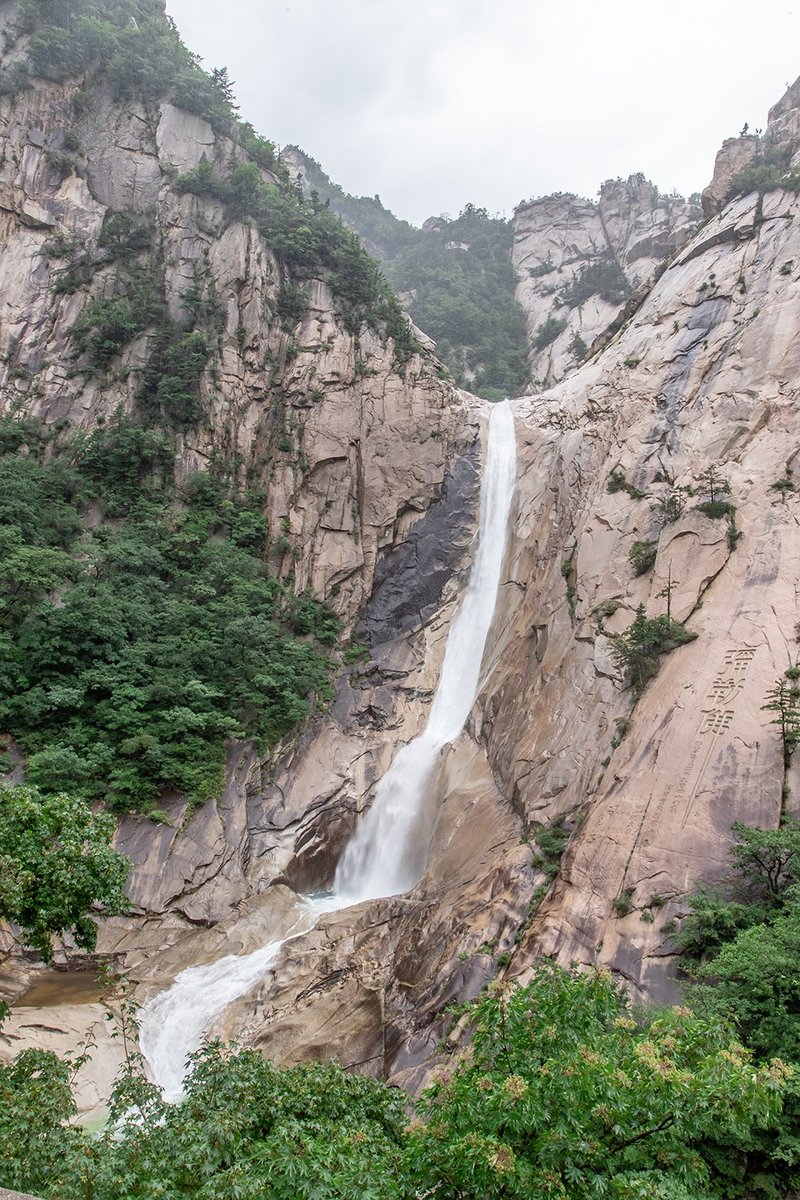Mount Kumgang is not an easy WHS to visit as it's located in the very closed country of North Korea. I visited in summer 2019 on a rainy day. Quite happy I did, as since 2020 North Korea is kind of closed for tourists completely. It was my second time in North Korea, again on a private itinerary (with my son this time though). Of course, 2 guides and a driver joined, but no group tour as I had specific wishes to see places. Things are possible. Mount Kumgang is not on many itineraries, and I didn't see a single other tourist throughout that day trip from Wonsan. The nomination file says the area can receive up to 1300 tourist with an average of 700 normally. Not sure about that; probably North Korean numbers.
The first stop was at Lagoon Samil Area in Sea Kumgang, which, at that time I didn't know, is part of the core zone as well. It's a beautiful lagoon with tiny islands and some shrines. Very peaceful. We stopped at a couple of lookout points and walked along the wooden walkways along the shore. It wasn't raining (yet).

Looking at the current WHS maps with inscribed area, I did not visit the area at the actual sea. It was offlimits probably due to sensitive area. I did ask at that time about Sea Kumgang, and the guides said I will see it. I think they simply meant the Lagoon Samil, which is part of it. We then drove into the Outer-Inner area, which the maps are not clear about what is what. I guess I was in the outer part (unless that is the buffer zone, then it was the inner part).
Mount Kumgang has long been admired for its striking natural beauty, characterized by pale granite peaks, steep valleys, cascading waterfalls, and untouched ecosystems. Towering close to 1,600 meters, its visual appeal is constantly transformed by shifting weather—mist, sunlight, clouds, and rain all adding to its mystique. Revered as a sacred site in mountain Buddhism since the 5th century, the area hosts a rich cultural heritage, including ancient temples, hermitages, stone carvings, and stupas, particularly within the Outer and Inner Kumgang regions. Today, three temples remain in use, offering a vivid testament to centuries of Buddhist tradition, where the spiritual and natural worlds are deeply connected.

The idea was to make a large walk through the mountain area (approx. 3-4 hours), but when we arrived at the waterfall, it started to pour rain. We were just 45 minutes into the hike, I think. It was also slippery, and we decided it was best to simply return, as the views would be more or less the same, and for sure the granite peaks the area is known for would show anyway. After the short hike, I visited one of the temples that are in the Mount Kumgang area. I really had to press for this, that I HAD TO SEE a Buddhist temple. I was allowed just a quick 10 minutes on the grounds, as they don't take tourists there normally.
All in all - it has UOV for sure. Natural beauty with the cultural elements too. Of course this is in other places as well but because it's so isolated it's really pristine. For me a perfect WHS!
If it were any other place, I would say it would be great to return in good weather, but for Mount Kumgang, I think that's a bit too much trouble. I did enjoy my visit, and it's truly an amazing place. At the nearby "luxury hotel" I had dinner a cold beer before we headed back to Wonsan.